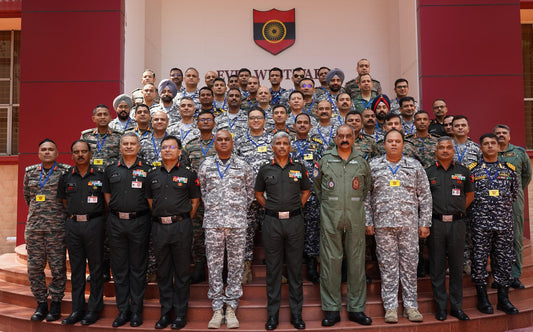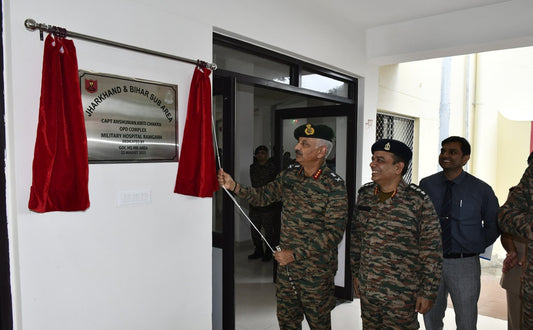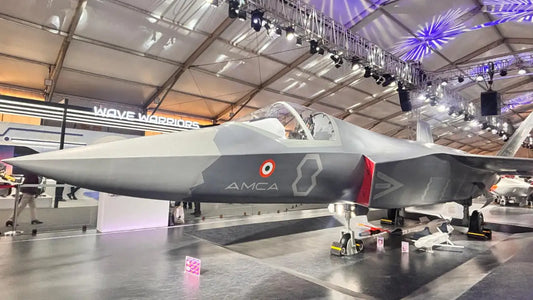What is a High Altitude Medal and Who Can Earn It?

The High Altitude Medal, also known as the Uchch Tungata Padak or Ucchh Tungta Medal, stands as a prestigious recognition within the Indian Armed Forces. It honors the extraordinary resilience and commitment of personnel serving in some of the world's most challenging terrains. Instituted to acknowledge service in extreme high-altitude environments along India's northern borders, this medal symbolizes the unyielding spirit of those who endure harsh conditions to safeguard the nation's sovereignty. For defence aspirants and military enthusiasts, understanding this award provides insight into the demanding realities of border defence and the valor it demands.
Historical Background of the High Altitude Medal
The High Altitude Medal was officially instituted on September 12, 1986, through President's Secretariat Notification No. 72/Pres/86. This establishment came in response to the need for recognizing prolonged service in the treacherous Himalayan regions, where temperatures can plummet to -50°C and blizzards persist for weeks. Prior to independence, Indian forces relied on British colonial awards, but post-1947, India developed its own system of decorations to honor indigenous military achievements.

The medal's creation was influenced by ongoing border tensions, particularly after conflicts like the 1962 Sino-Indian War, which highlighted the strategic importance of high-altitude postings. It forms part of a broader evolution in Indian military honors, transitioning from wartime gallantry awards to those recognizing peacetime endurance and specialized service. Over the decades, it has become a symbol of India's commitment to defending its mountainous frontiers against environmental and geopolitical adversities.
Significance in the Indian Armed Forces
In the Indian Armed Forces, the High Altitude Medal holds profound significance as it commemorates the silent heroism of personnel facing not just adversaries but also nature's extremes. It underscores the forces' role in maintaining territorial integrity along the Line of Actual Control (LAC) and other sensitive borders. This award fosters a sense of pride and camaraderie among troops, reminding them of the shared sacrifices in inhospitable conditions.
For the broader military community, it highlights the specialized skills required for high-altitude warfare, including acclimatization, logistics in thin air, and sustained operational readiness. It also serves as an educational tool for recruits, illustrating the multifaceted demands of service and inspiring future generations to embrace such challenges.
Eligibility Criteria for Earning the High Altitude Medal
Eligibility for the High Altitude Medal is strictly defined to ensure it rewards genuine commitment in qualifying areas. Personnel must be detailed for duties connected with border defence and complete an aggregate service of 180 days within a 24-month period, starting from April 1, 1984. This tenure must occur in regions where high altitude allowance is admissible.
For those posted prior to April 1, 1984, similar aggregate service qualifies. Air Force personnel have a distinct criterion: a minimum of ten sorties or forty hours of flying in eligible high-altitude zones after October 27, 1947. The award is open to all ranks, including those from Reserve Forces, Territorial Army, and other lawfully constituted units.
Specific Altitudes and Regions Where Service Qualifies
Service must be rendered at altitudes of 9,000 feet (approximately 2,743 meters) and above to qualify. Key regions include the Himalayan borders, such as Ladakh, Jammu and Kashmir, Himachal Pradesh, Uttarakhand, Sikkim, and Arunachal Pradesh. These areas encompass strategic points along the Indo-China and Indo-Pakistan borders, where environmental hazards like hypoxia, frostbite, and avalanches are commonplace.
Notable qualifying zones include the Siachen Glacier the world's highest battlefield and forward posts in the Karakoram Range. Service in these locations, often involving patrolling, surveillance, and logistics support, directly contributes to national security.
Branches of the Military and Other Forces That Award It
The High Altitude Medal is primarily awarded across all branches of the Indian Armed Forces: the Army, Navy, and Air Force. Army personnel form the majority of recipients due to their extensive ground deployments, while Navy and Air Force members qualify through support roles, such as aerial reconnaissance or maritime patrols in adjacent high-altitude sectors.
Paramilitary forces, including the Indo-Tibetan Border Police (ITBP) and Border Security Force (BSF), may also receive it for border troop duties at qualifying heights, as announced by the government in 2016. For police forces, the medal features a distinct ribbon, recognizing their contributions in joint operations or specialized high-altitude policing. This inclusive approach ensures comprehensive acknowledgment of all defenders in extreme environments.
Design, Ribbon Colors, and Symbolism of the Medal
The medal is circular, crafted from cupro-nickel, measuring 35 millimeters in diameter, and fitted to a plain horizontal bar. The obverse features the State Emblem of India (Ashokan Lions) with the inscription "उच्च तुंगता पदक" in Hindi, signifying "High Altitude Medal." The reverse depicts a rugged mountain range, evoking the Himalayan landscape.
The ribbon, 32 millimeters wide, has an azure blue background with white diagonal reverse V-shaped stripes. Azure blue symbolizes the vast, clear skies of high altitudes and the perseverance required therein, while white represents the perpetual snow cover and purity of service. These elements collectively embody the medal's theme of endurance amid formidable natural barriers.
Examples of Situations, Operations, or Postings Where Personnel Receive the Medal
Recipients often earn the medal through postings in Siachen Glacier, where soldiers endure sub-zero temperatures and isolation for months. For instance, during Operation Meghdoot (1984 onwards), Indian troops secured the glacier, qualifying many for this award amid ongoing high-altitude confrontations.
Other examples include patrols in the North East Frontier Agency (NEFA) during the 1962 war and current deployments in Ladakh amid LAC standoffs. Air Force pilots conducting reconnaissance flights over the Karakoram Pass or Army logistics teams in Dras and Kargil sectors also qualify after meeting the tenure threshold. These scenarios illustrate the medal's role in honoring sustained operational vigilance.
Benefits, Recognition, and Career Impact for Recipients
Receiving the High Altitude Medal brings significant recognition, enhancing a recipient's prestige within the forces and society. It serves as a tangible symbol of exceptional service, often featured in parades and official records, boosting morale and unit cohesion.
Career-wise, it demonstrates proven capability in demanding environments, potentially influencing promotions, specialized assignments, or selections for elite units like the High Altitude Warfare School (HAWS). While the medal itself is honorary without direct financial benefits, it aligns with high altitude allowances (e.g., R3H2 category at ₹3,400 per month for officers), providing indirect economic support. For veterans, it aids in post-service opportunities, such as roles in adventure training or security consulting, underscoring leadership under adversity.
Conclusion: Honoring Endurance in the Heights
The High Altitude Medal encapsulates the essence of dedication in India's defence narrative, rewarding those who stand guard where few can survive. For aspiring officers and enthusiasts, it represents not just an award but a testament to the human spirit's triumph over adversity. As border dynamics evolve, this medal continues to inspire, ensuring the legacy of high-altitude warriors endures.



















